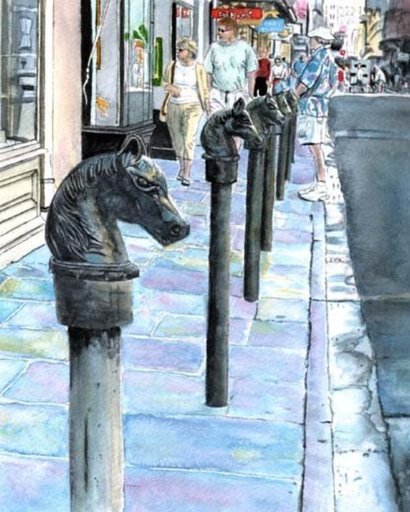The Ninth Ward of New Orleans, a neighborhood with a rich tapestry of culture and resilience, stands as a poignant testament to the pre-Katrina vibrancy of the Crescent City. Once a thriving community, the Ninth Ward represented a unique conflation of historical legacies, social dynamics, and architectural nuances. This examination endeavors to elucidate the underpinnings of its historical significance and invoke a perception of loss while simultaneously celebrating its unique identity before the tumultuous storm of Hurricane Katrina in 2005.
To appreciate the Ninth Ward’s intrinsic value, one must first consider its geographical context. Nestled along the banks of the Mississippi River, the ward was characterized by its picturesque vistas, intricate canal networks, and an array of lush vegetation. The geographical advantages of this setting had long influenced the dynamics of settlement and development. The Ninth Ward became a destination for many African American families, drawn by the labor opportunities in the realm of agriculture, shipbuilding, and, subsequently, industry. However, the socio-political landscape of New Orleans during the mid-20th century often limited the aspirations of its residents.
Moreover, the architectural diversity of the Ninth Ward aptly illustrated the neighborhood’s cultural heritage. The area was defined by traditional Creole cottages, shotgun houses, and more modern constructions that bore witness to the evolution of design over generations. These homes not only provided shelter but contributed to a communal identity, fostering neighborly kinship. Victoriana flourishes and the spartan functionalism of the more modern builds coexisted, offering a tapestry of aesthetics that was both eclectic and harmonious.
Culturally, the Ninth Ward was rich with traditions that veered away from the mainstream narratives often presented to outsiders. Local festivals, parades, and culinary practices were steeped in African, Spanish, and French influences, creating a unique culinary landscape. Iconic dishes such as gumbo and jambalaya emerged not merely as food but as cultural artifacts narrating the history of the area. The vibrant music scene, which included jazz, blues, and the festive rhythms of second line parades, were intrinsic to the Ninth Ward’s identity. These artistic expressions often served as avenues for storytelling and community bonding.
Addressing a common observation, it is often noted that the Ninth Ward was a neighborhood marked by a paradox of poverty amidst profound cultural richness. The pressing socio-economic challenges facing the residents can be attributed to a complex interplay of historical disenfranchisement and systemic inequalities. The legacy of systemic racism, most poignantly viewed through the lens of urban planning and housing policy, rendered many residents vulnerable to economic precarity. However, the resident’s ability to cultivate a sense of community despite adversity is a testament to the indomitable spirit that characterized the ward pre-Katrina.
Insights into the Ninth Ward’s vibrant community dynamics reveal extensive communal networks. Social gatherings were commonplace, often held in backyards or on porch steps, fostering discussions that spanned generations. This interaction formed a social fabric that resisted the alienation felt in many urban settings, creating a sense of belonging that undergirded the community’s resilience. The importance of local leadership figures, such as church pastors and community organizers, cannot be overstated; they played critical roles in mobilizing resources and advocating for the needs of residents in the face of various challenges.
The Ninth Ward also existed as a locus for artistic expression, as evidenced by the visual arts and craftwork emerging from the community. Local artisans imbued their work with cultural significance, employing materials sourced from the local environment—further enhancing the bond between place and identity. Murals and public art installations were not simply visual adornments but rather profound commentaries on history, culture, and identity reflective of the community’s narrative.
However, it is essential to acknowledge the implications of urban change in the Ninth Ward. During the late 20th century, waves of gentrification and economic shifts began to influence the neighborhood. This incursion, however marginal, highlighted the tensions between preservation and development, further complicating the socio-economic identity of the ward. These changes often heralded a gradual alteration of the communal landscape, eroding some aspects of its rich cultural heritage.
As Hurricane Katrina approached in August 2005, the existing vulnerabilities of the Ninth Ward were starkly accentuated. The impending storm acted as a catalyst, magnifying pre-existing socio-economic disparities. In the aftermath of Katrina, the Ninth Ward bore scars both physical and emotional; homes were displaced, communities fragmented, and the cultural sinews of the neighborhood were tragically severed. This designated “forgotten gem” embodies the quintessence of vibrancy amidst adversity, standing as a somber reminder of what was lost in the fallout of natural disaster.
Ultimately, the Ninth Ward of New Orleans before Katrina remains an indelible part of the city’s character. Examining its complexities reveals a community that thrived creatively and communally amidst encumbering challenges. The vibrancy, resilience, and heartbreak of the Ninth Ward warrant appreciation, anchoring it not only in the collective memory of New Orleans but as a lasting narrative of cultural richness that transcends time.
In reflection, the Ninth Ward serves as a rich study of contrasts, representing both the beauty of human perseverance and the stark realities of systemic failings. Though it may have been labeled a “forgotten gem,” the legacies of those who called it home continue to inspire and remind us of the nuances often obscured in the narratives of urban spaces.
